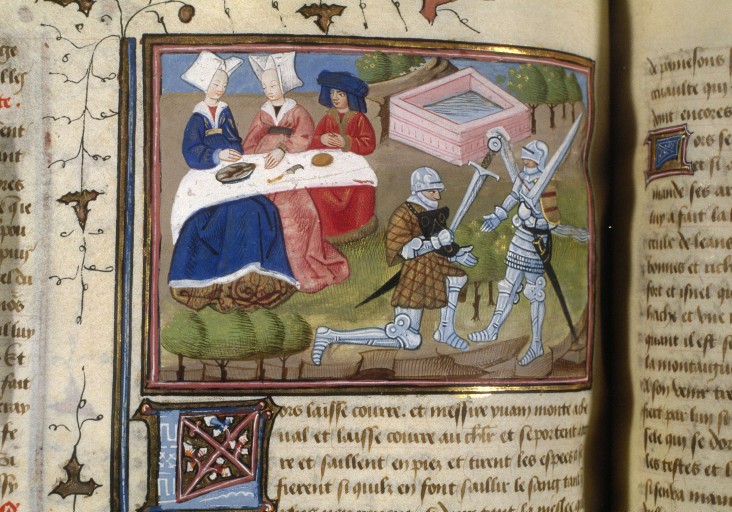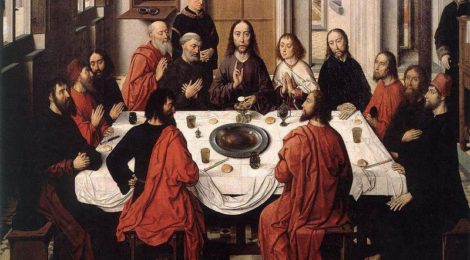
The Origin of Tablecloth
Whether it was a sheet of paper with the puzzles and games printed on it that we got to draw on in a restaurant or having been scolded for spilling something on a table cloth at the holiday’s our associations with table coverings go way back. While it’s undeniable that there’s something transformative about laying a covering before a meal the tablecloth itself has evolved in both function and meaning over the millennia.
The origin of the western use of some sort of table covering is almost certainly linked to various older religious purification and meal rituals. table coverings first seem to have appeared, officially, in historical records in the Roman period around the first century AD. By the middle ages a table cloth usually appears in paintings or mosaics depicting important meals and banquets.
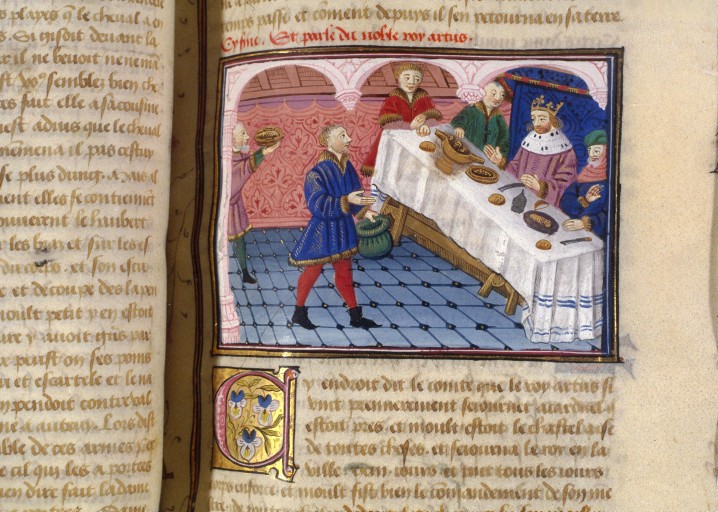
Manuscript made in Poitiers (BNF Fr 111) c. 1480, with the stories of Lancelot, the quest of the Grail, and the death of King Arthur folio #47. Early secular table coverings like the one shown still show the blue stripes that would have been associated with religious purification rites.
There are depictions of travelers in the middle ages using table cloths even in the absence of a table itself. It’s almost as though the cloth itself forms the bond between the partakers who could have more easily eaten separated
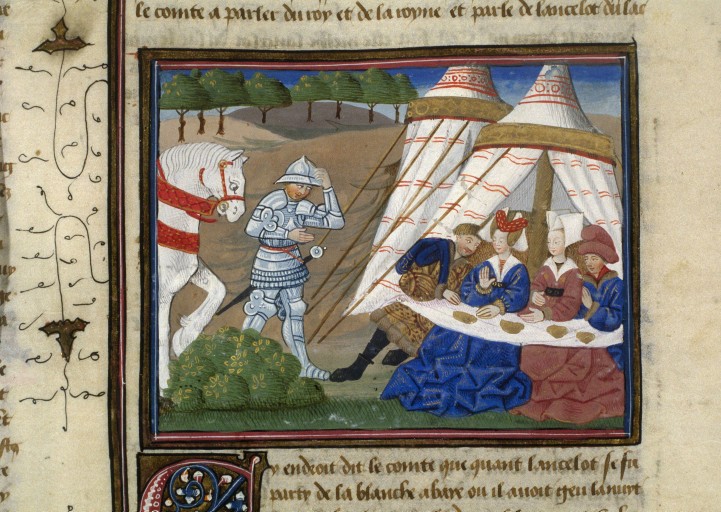
Manuscript made in Poitiers (BNF Fr 111) c. 1480, with the stories of Lancelot, the quest of the Grail, and the death of King Arthur dining just outside a pavilion, fol. io 141 outside on a tablecloth spread across their laps.
Prior to the proliferation of the fork the table cloth was occasionally made to be used as a large communal napkin as shown in the painting below from 1465.
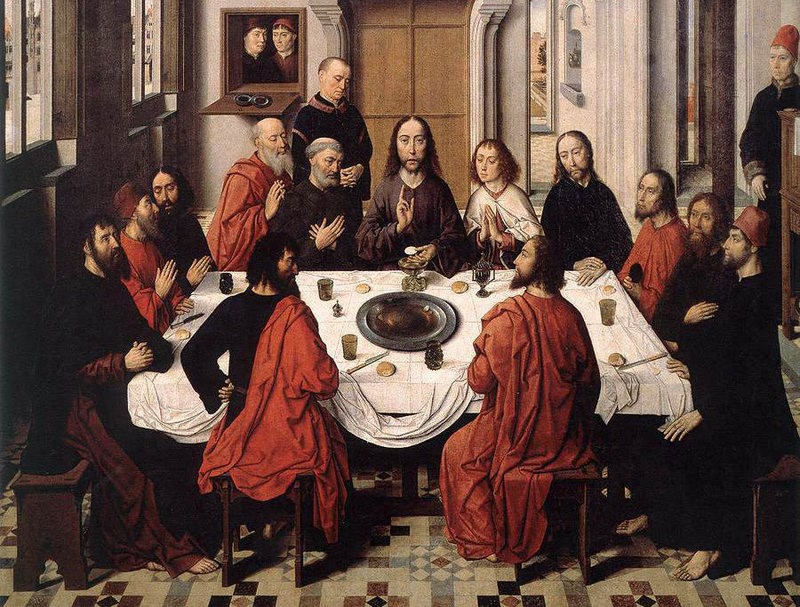
From Dieric Bouts’ Triptych of the Last Supper, c. 1465. Note the use of the tablecloth as a giant communal napkin. This is part of the Altarpiece of the Holy Sacrament or Triptych of the Last Supper is a 1464–1468 dated triptych attributed to Dieric Bouts, now reassembled and held at its location of origin at St. Peter’s Church Leuven east of Brussels, Belgium
By the renaissance the possession of table linens was part of patronage of all guilds and crafts that denoted social standing. Tablecloths became a part of a bride’s dowry in Eastern Europe in the late middle ages and are linked to other purity rituals that were part of the wedding events. In the late 17th through the 18th century a table cloth might have been more to cover a table to protect it between meals than to use under a meal. It was more likely to be removed during the meal than used during the meal.
As the industrial age rolled in table coverings of all sorts became more available and, as with all areas of life and society, layer upon layer of finery to show off newfound prosperity or pretense to old money was heaped upon to the dining experience. In the process the table cloth became a symbol of an inflexible, ostentatious, labor intensive life. It’s not surprising then that table coverings, in their various forms have, themselves, become the most conspicuous symbols of the conflict over how we regard group meals in our lives. For many the minute the table cloth a grey cloud of dread rolls over the event and the feeling sets in that the meal is something simply to get through. For many of us the way a tablecloth signals that specialness and calls for respect has come to feel more like oppression and pretense than community.
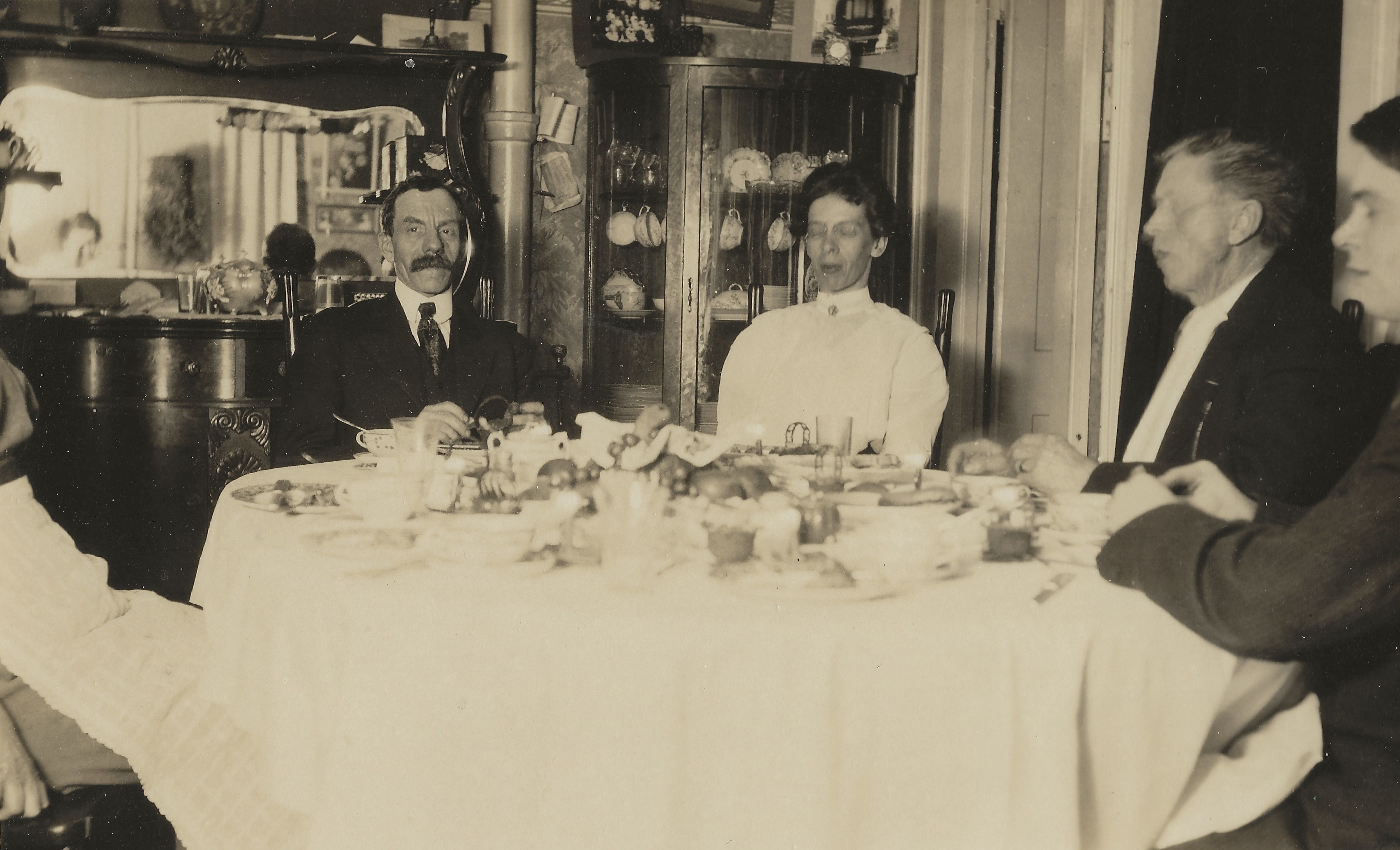
Sparse by comparison to gilded age excess of the mid-Victorian period this late Victorian table in a middle class household was still all about finery and showing one had the means to have more.
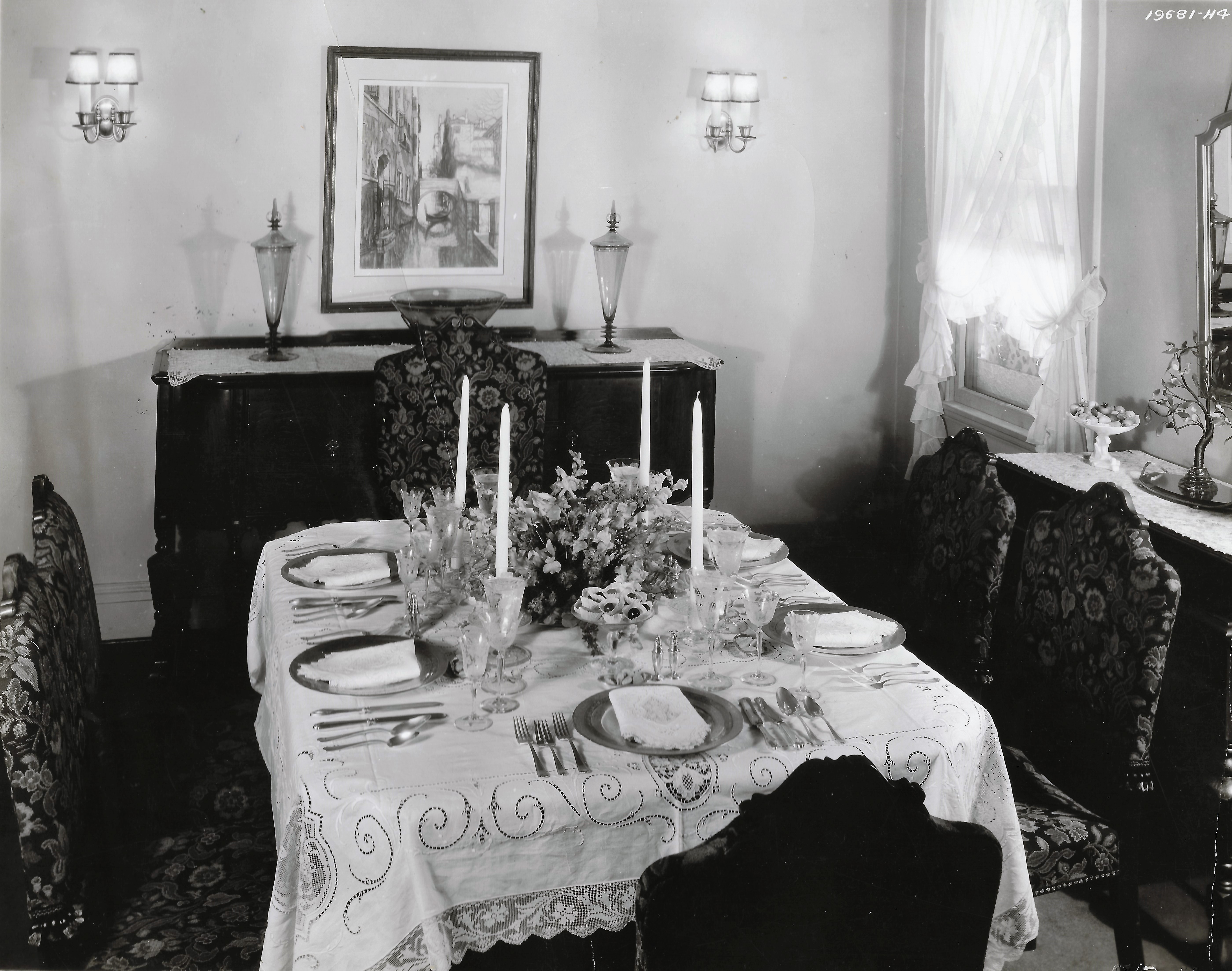
From the Victorian era through the early 1920s more was definitely more as a swelling middle class sought to show how far they’d come.
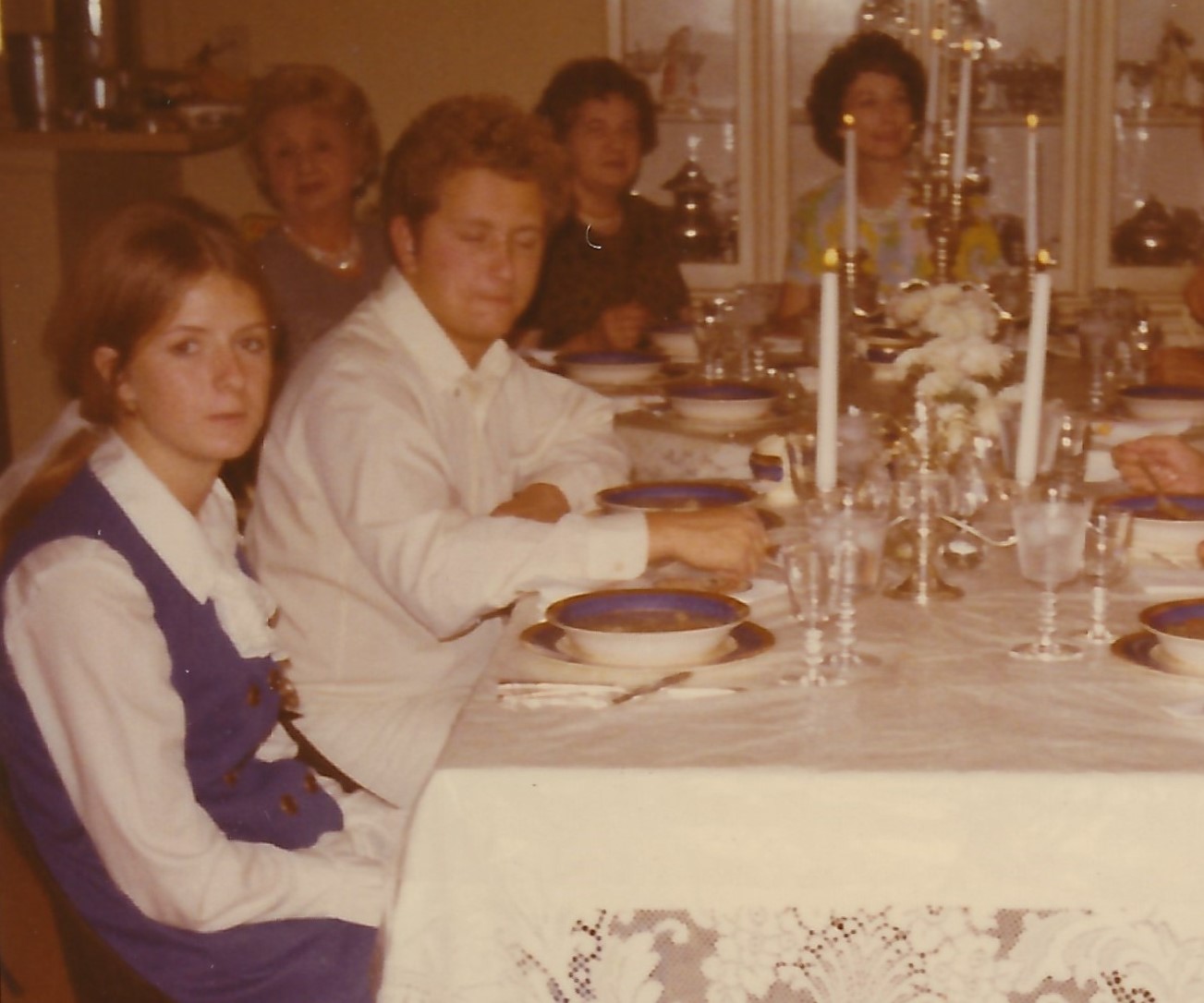
Of the many accouterments that arose from the excesses of the Victorian period Silver and fine linens are the two which were met with the most resistance as those eras passed. The presence of those two things more often triggered dread than delight over special meals.
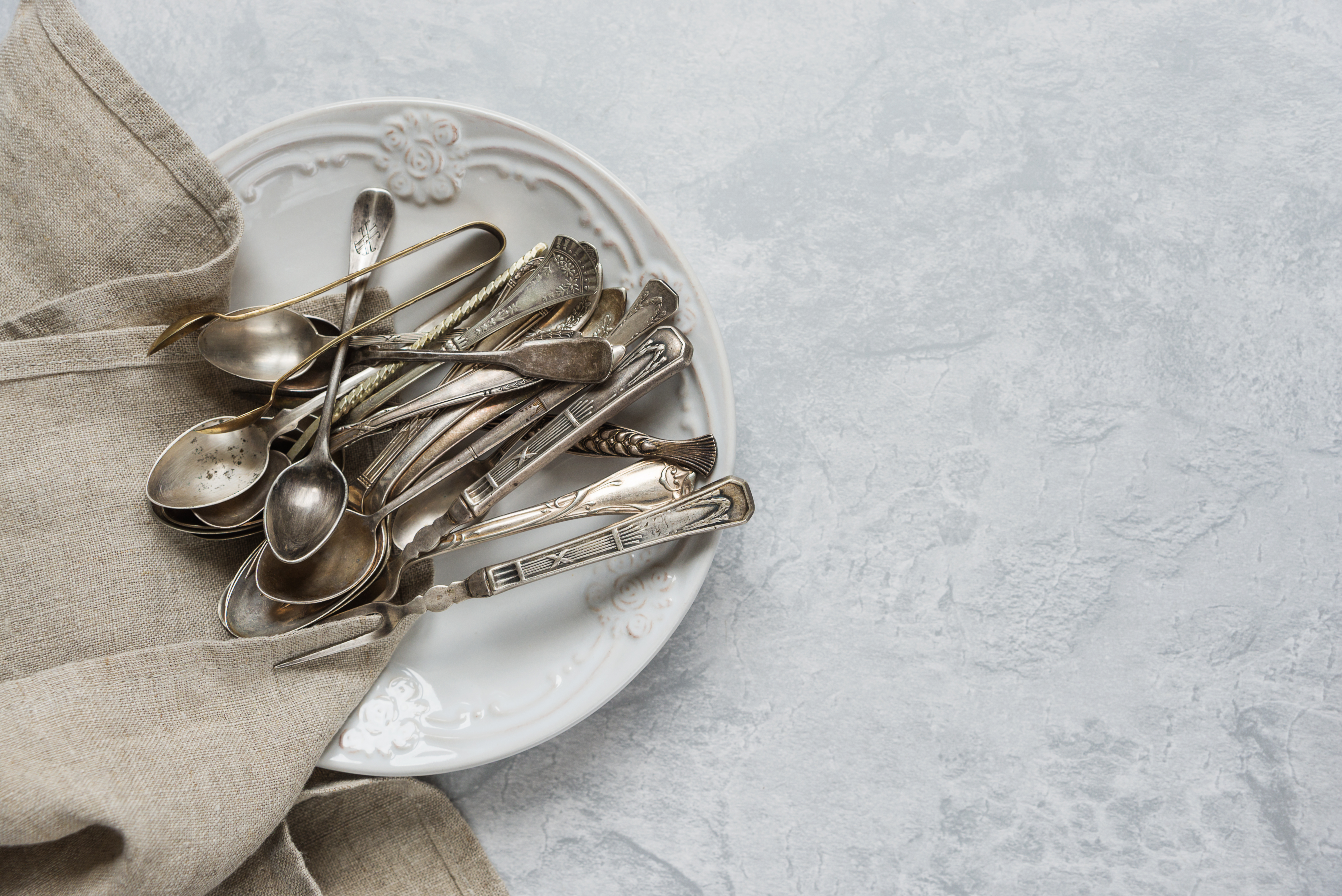
Today, with the absence of the weight of convention and standards, we’re completely free to find new, comfortable and creative ways to use traditional things. Mixing and matching releases us for the expectation to use things in expected ways and introduces a casual and spontaneous spirit to any event.
Laying a cloth or covering at our table is powerful announcement that what is about to take place is something that is special and is requesting respect. It’s just as easy to use that covering to signal community and acceptance with the gesture of laying a tablecloth as it is to convey rigidity and intolerance. Table cloths, place mats and runners can be specifically used to bring people together and facilitate conversation.
Using table runners to tie place settings together builds a physical and visual bridge between guests.
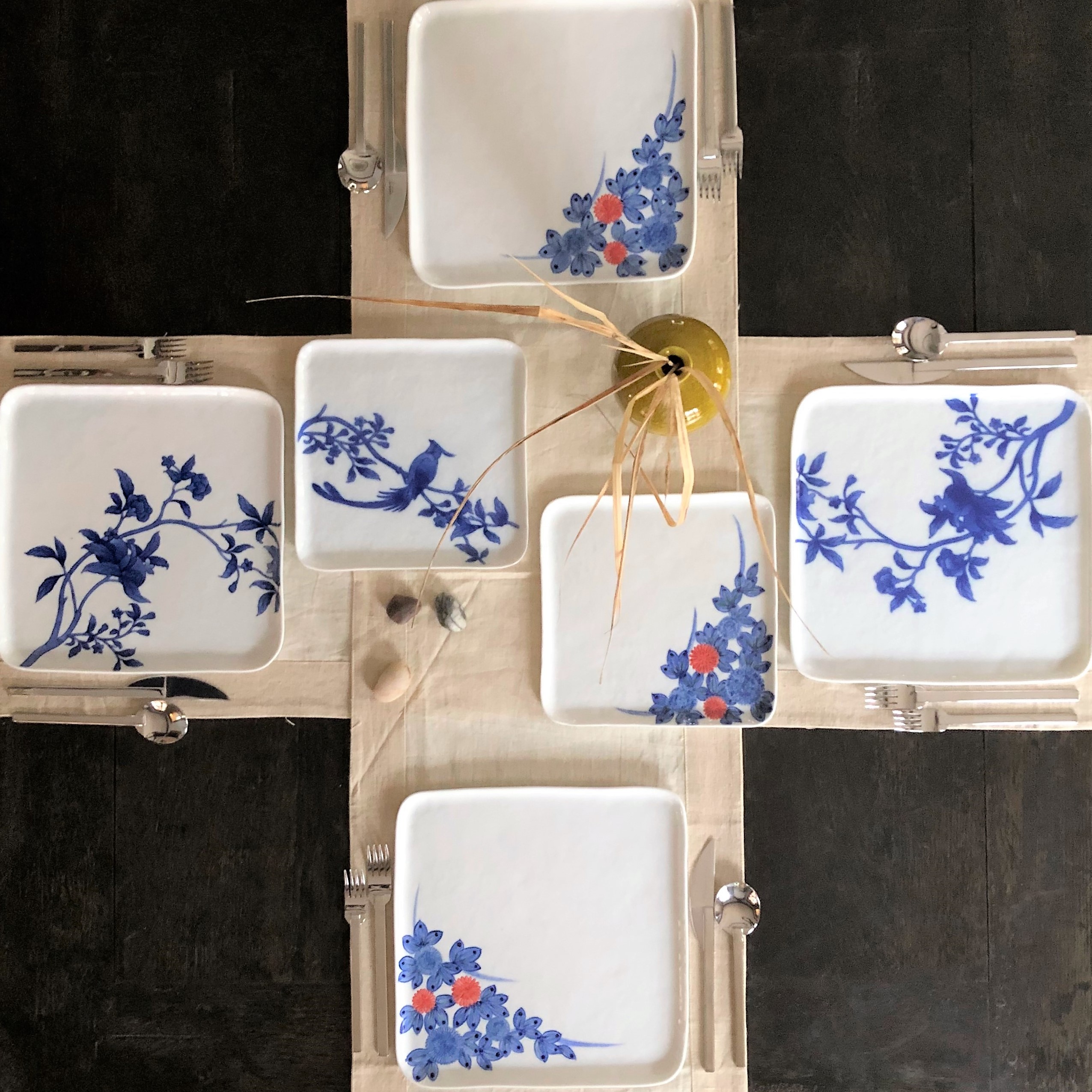
Using multiple table runners across and under place settings rather than down through the center of the table 1) feels less formal because it’s really more like an extended place mat 2) connects guests across the table facilitating conversation both with the person next to you and across from you and 3) still protects the table
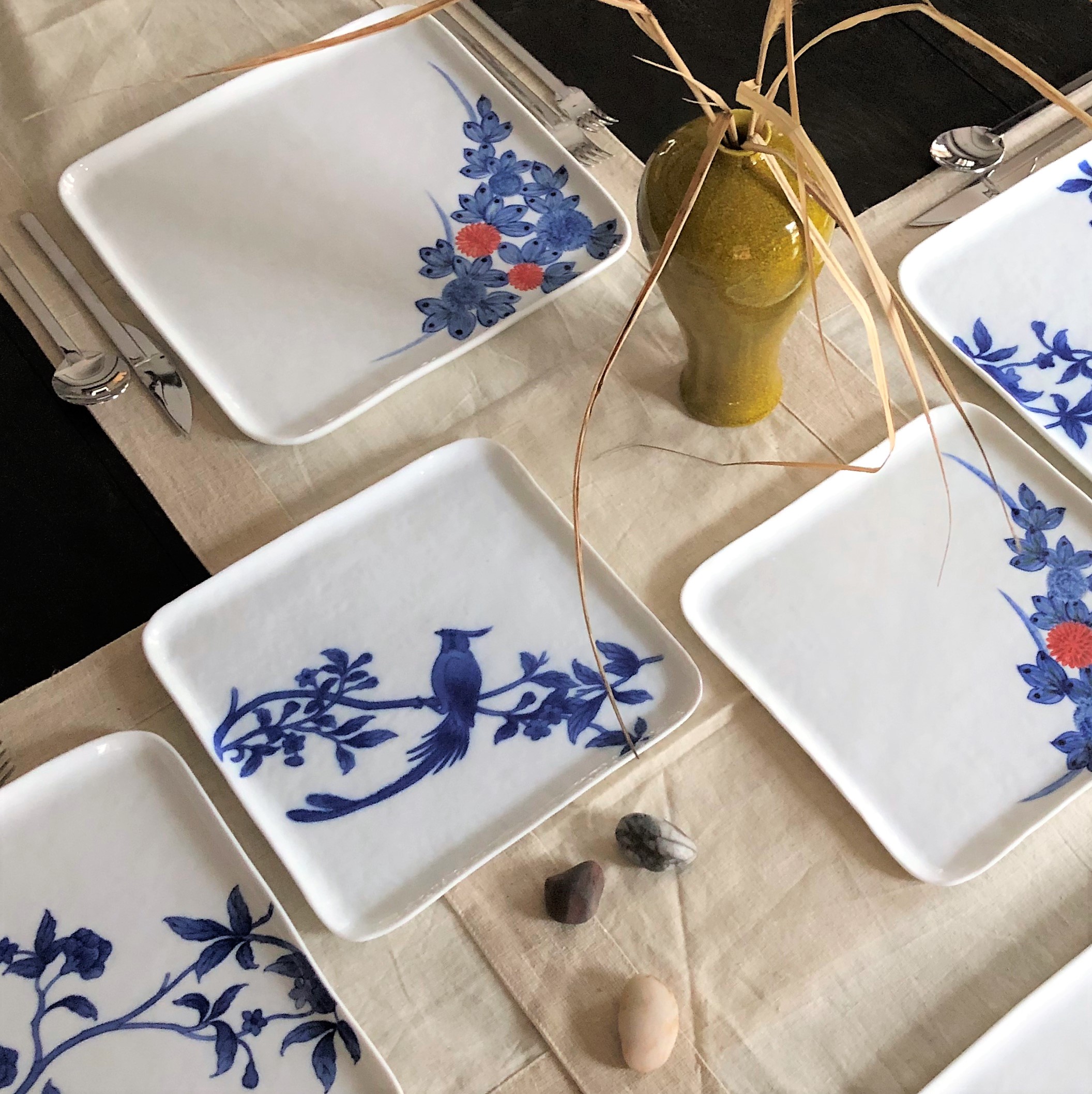
Choosing fabrics that look more handmade and less formal relieves us of the pressure that fabrics need to be perfectly ironed. The presence of handmade things instantly disarms the feeling of stuffiness and formality.
When using multiple tables put together a uniform single covering prevents the feeling that there is a ‘main’ table and others are secondary enforcing that everyone is there together at the same table. Large long stripe patterns help to visually tie long tables together.
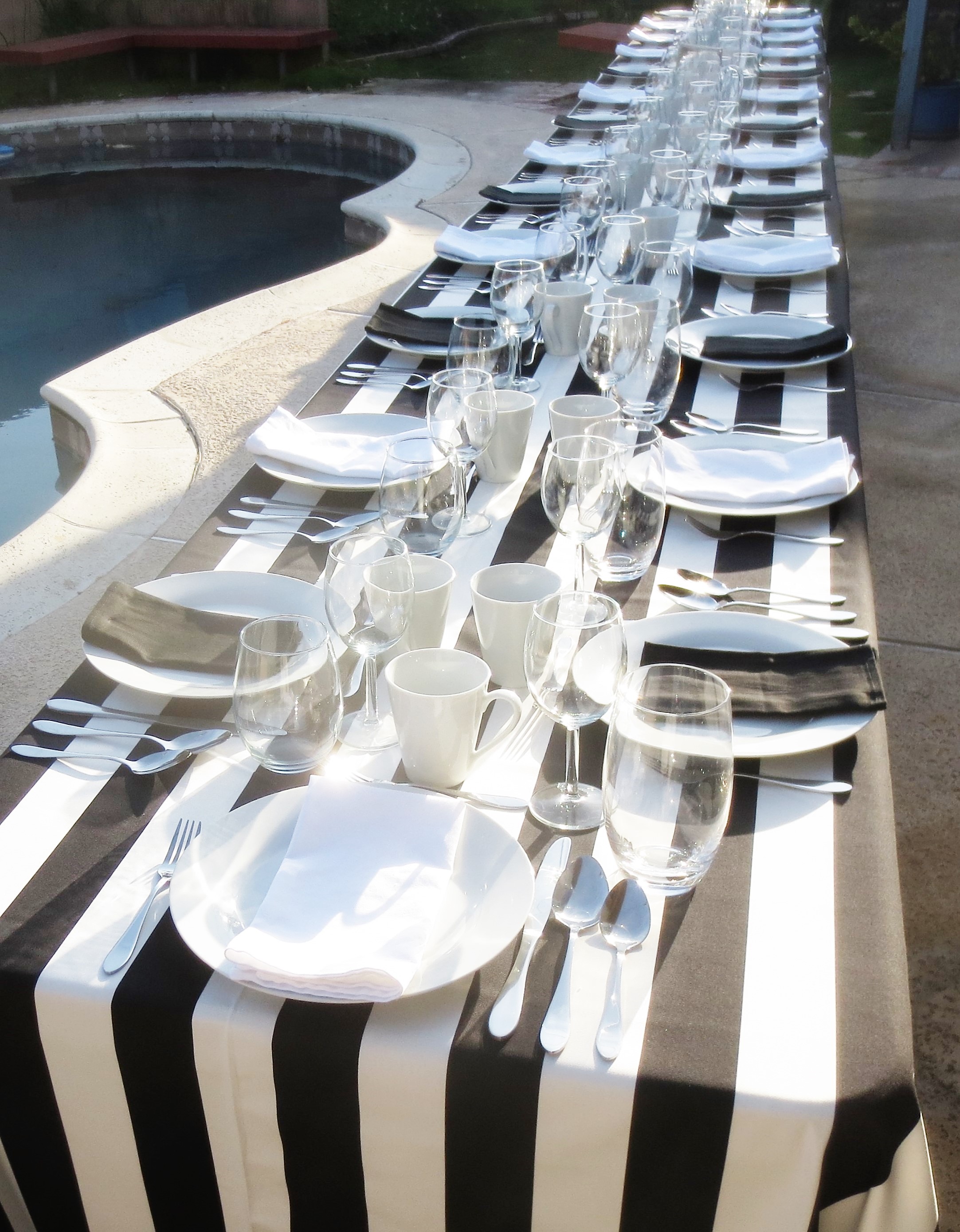
This table was assembled from 6 standard folding tables which were in bad shape and needed to be covered. In those situations it”s important that the covering not apologize for the folding tables but actually play an important role in the event. As anyone who has ever been seated at a very long table knows it is sometimes hard to connect with anyone other than the people directly adjacent to you. A table covering pattern that visually draws your eye down the length of the table has amazing subliminal influence that promotes conversation further down the table. This fabric was bought by the yard at Ikea very reasonably. No one ever noticed the edge wasn’t hemmed.
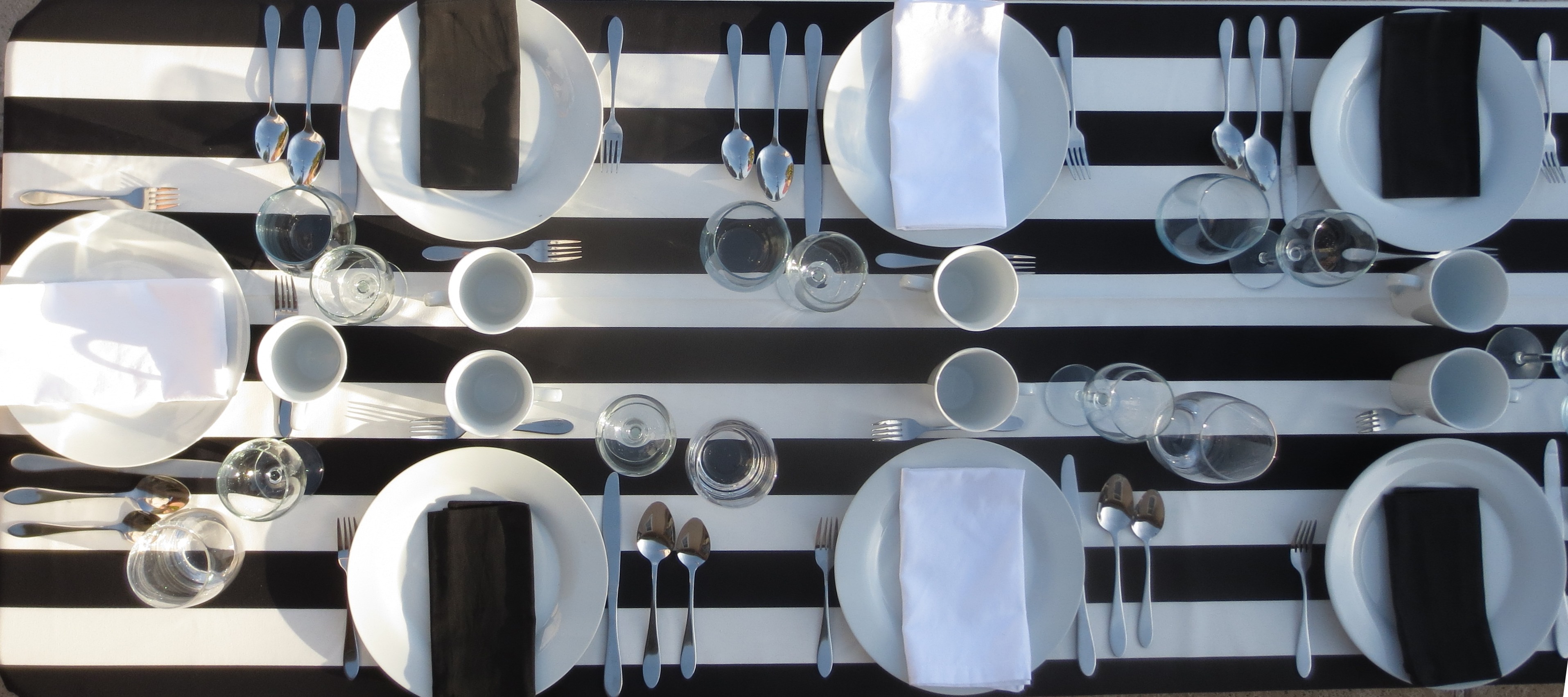
The bold stripes of this fabric build visual connections along the expansive length of this table for 48. The eye is drawn futher down the table to guests 2 or three seats away rather than just to the adjacent person. The alternating black and white napkins further integrate the place settings with the whole table making everyone feel connected.

